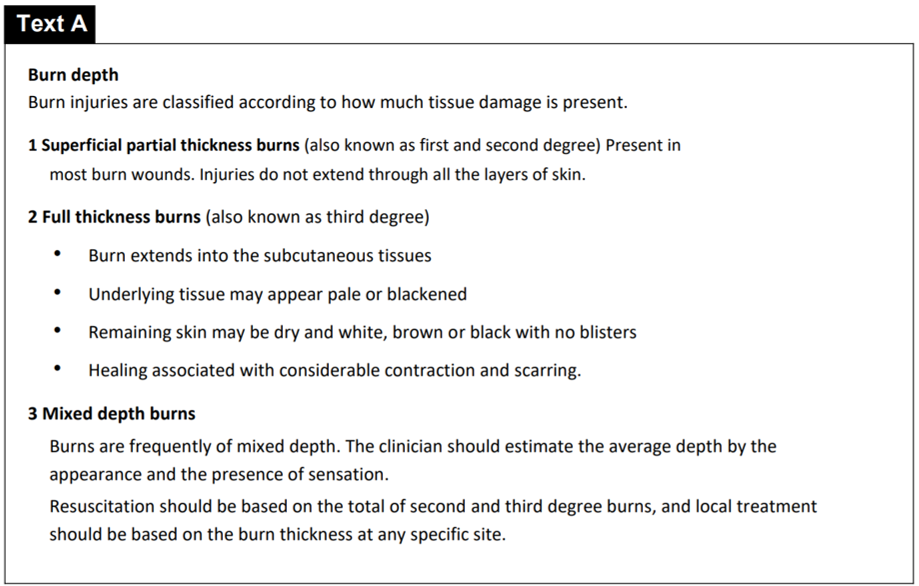Identify the main idea of the following passages.
Instruction Manual: Digital Automatic Blood Pressure Monitor
Electromagnetic Compatibility (EMC)
With the increased use of portable electronic devices, medical equipment may be susceptible to electromagnetic interference. This may result in incorrect operation of the medical device and create a potentially unsafe situation. In order to regulate the requirements for EMC, with the aim of preventing unsafe product situations, the EN60601-1-2 standard defines the levels of immunity to electromagnetic interferences as well as maximum levels of electromagnetic emissions for medical devices. This medical device conforms to EN60601-1-2:2001 for both immunity and emissions. Nevertheless, care should be taken to avoid the use of the monitor within 7 metres of cellphones or other devices generating strong electrical or electromagnetic fields.
Answer and Explanation
The main idea is stated at the beginning of the paragraph and then restated at the end.
The transition word ‘Nevertheless’ introduces an important point.
Key information
- medical equipment may be susceptible to electromagnetic interference.
- care should be taken to avoid the use of the monitor within 7 metres of cellphones or other devices generating strong electrical or electromagnetic fields.
Scan for words like such as, also, this, that, these, those, for example, which. These indicate a connection to the main information.
For example, the following sentence ‘This may result in incorrect operation of the medical device and create a potentially unsafe situation’ is a supporting sentence.
To: All Staff
Subject: Advisory Email: Safe use of opioids
In August, an alert was issued on the safe use of opioids in hospitals. This reported the incidence of respiratory depression among post-surgical patients to an average 0.5% – thus for every 5,000 surgical patients, 25 will experience respiratory depression. Failure to recognise respiratory depression and institute timely intervention can lead to cardiopulmonary arrest, resulting in brain injury or death. A retrospective multi-centre study of 14,720 cardiopulmonary arrest cases showed that 44% were respiratory related and more than 35% occurred on the general care floor. It is therefore recommended that post-operative patients now have continuous monitoring, instead of spot checks, of both oxygenation and ventilation.
Answer and Explanation
The main idea is found in the last sentence, ‘It is therefore recommended that post-operative patients now have continuous monitoring, instead of spot checks, of both oxygenation and ventilation.‘
The sentences before this provides background information.
Transfer of patients
1.15
The critical care area transferring team and the receiving ward team should take shared responsibility for the care of the patient being transferred. They should jointly ensure that:
- there is continuity of care through a formal structured handover from critical care area staff to ward staff (including both medical and nursing staff), supported by a written plan;
- the receiving ward, with support from critical care if required, can deliver the agreed plan.
1.16
When patients are transferred to the general ward from a critical care area, they should be offered information about their condition and encouraged to actively participate in decisions that relate to their recovery. The information should be tailored to individual circumstances. If they agree, their family and carers should be involved.
Answer and Explanation
The topic is about what to do when transferring patients.
We can see in this passage that the main idea is not explicitly stated. However, it can be deduced from the following key information:
-
- transferring time and receiving team should jointly ensure the continuity of care
- transferring team provide formal structured handover supported by written plan
- receiving team delivered the agreed plan
- patients should be informed about their condition

